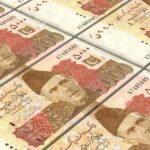About Us
Contact Us
Advertise With Us
Disclaimer
Privacy Policy
Terms & Conditions
Copyright © 2024 - BoldDiscussions.com

In recent months, Pakistan has seen a notable increase in its external public debt, climbing by $1.2 billion within just half a year to reach $86.358 billion as of September 30, 2023. This uptick comes amidst efforts to bolster the nation's economy and manage its fiscal responsibilities effectively. The Ministry of Economic Affairs, in its first quarterly report on Foreign Economic Assistance for the current fiscal year, shared that Pakistan has welcomed $3.5 billion in foreign inflows from July to September 2023. Even after accounting for $1.5 billion in loan repayments, the country still enjoyed a net inflow of $1.97 billion, showcasing the international community's ongoing support.
Notably, 64% of Pakistan's total external debt is sourced from either multilateral or bilateral channels, which typically offer more favorable terms and extended maturity periods. This strategic financing method underscores Pakistan's prudent approach to managing its external obligations while securing its economic future.
Furthermore, during this period, Pakistan has successfully negotiated $642 million in new funding agreements, primarily with multilateral development partners. These funds are earmarked for vital sectors such as project financing, program support, and commodity financing, with a significant focus on recovering from the 2022 floods' devastating impact.
The International Monetary Fund (IMF) and other bilateral partners, including the United Arab Emirates, the World Bank, and the Islamic Development Bank, have played pivotal roles in this financial influx. For instance, the IMF's release of $1.2 billion as part of a larger $3 billion Stand-By Arrangement highlights the global financial community's trust in Pakistan's economic management.
In addition to these inflows, Pakistan has also made significant repayments, totaling $2.404 billion during the first quarter of the fiscal year, which includes both principal and interest payments. This demonstrates Pakistan's commitment to honoring its financial obligations on time.
The funds received have been allocated towards various critical sectors, including flood relief, energy, water, transportation, health, and agriculture. These investments not only aim to address immediate needs but also lay the groundwork for sustainable development and economic resilience.
Moreover, Moody's recent upgrade of Pakistan's banking sector outlook to 'stable' is a testament to the effective financial strategies and reforms implemented by the country. This positive development indicates a brighter economic future for Pakistan, bolstering investor confidence and potentially leading to more favorable credit terms in the future.
Pakistan's journey in managing its external debt is a narrative of strategic planning, international cooperation, and a steadfast commitment to economic reforms. The increase in external debt is met with a comprehensive strategy to ensure that the funds are utilized effectively, promoting growth and stability. As Pakistan continues to navigate its economic challenges, the support from international partners and the focus on development and reform signal a hopeful path towards a more prosperous and stable future.
Disclaimer.
This article provides information only and should not be construed as advice. It is provided without warranty of any kind. Also please note that content on this platform may be subject to copyrighted material. If you believe we have used your content in any way then please get in touch with us. We will take down your content immediately.
Share This Post





BOLDDISCUSSIONS
We Produce Content That informs, Educates And Entertains People Around The World to stay updated on every topic with confidence.
Copyright © 2024 – BoldDiscussions.com

